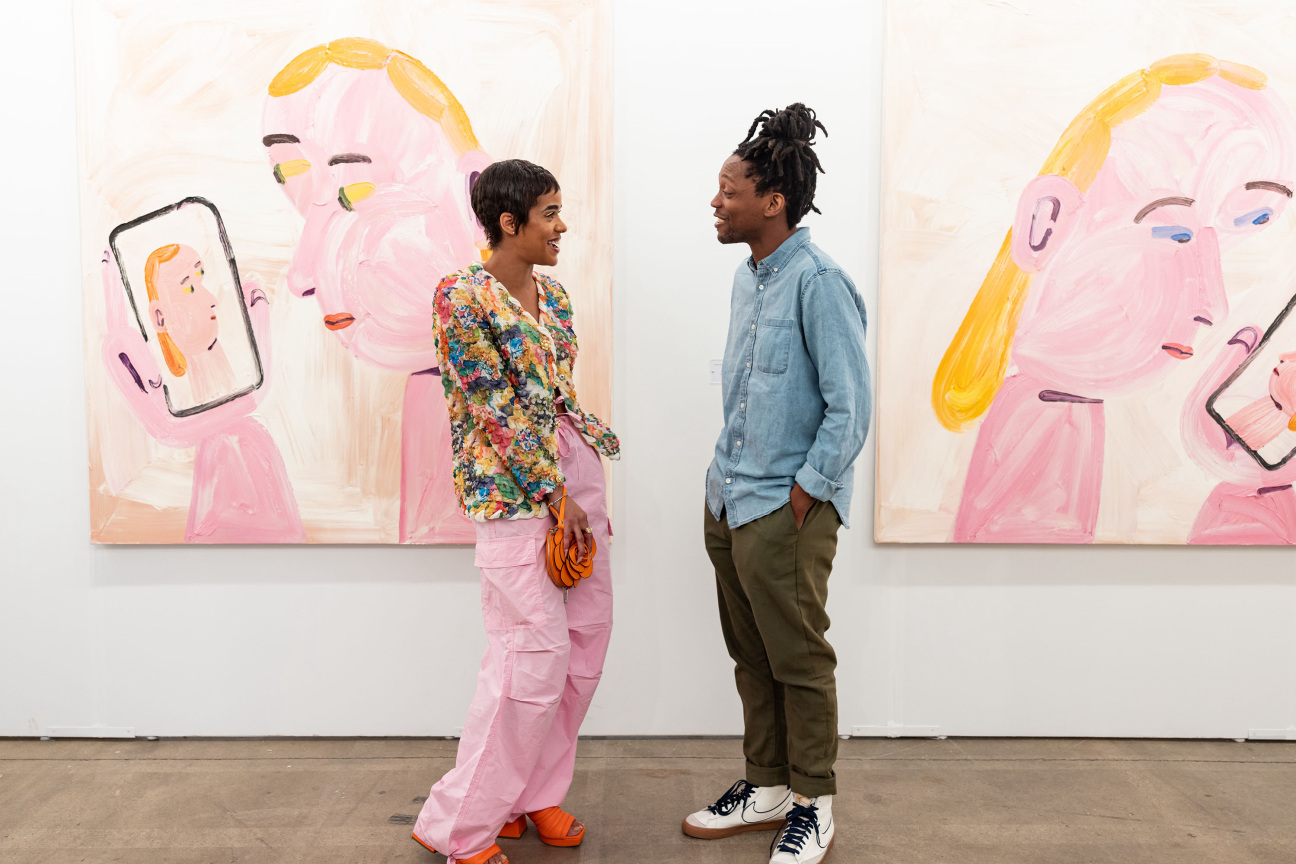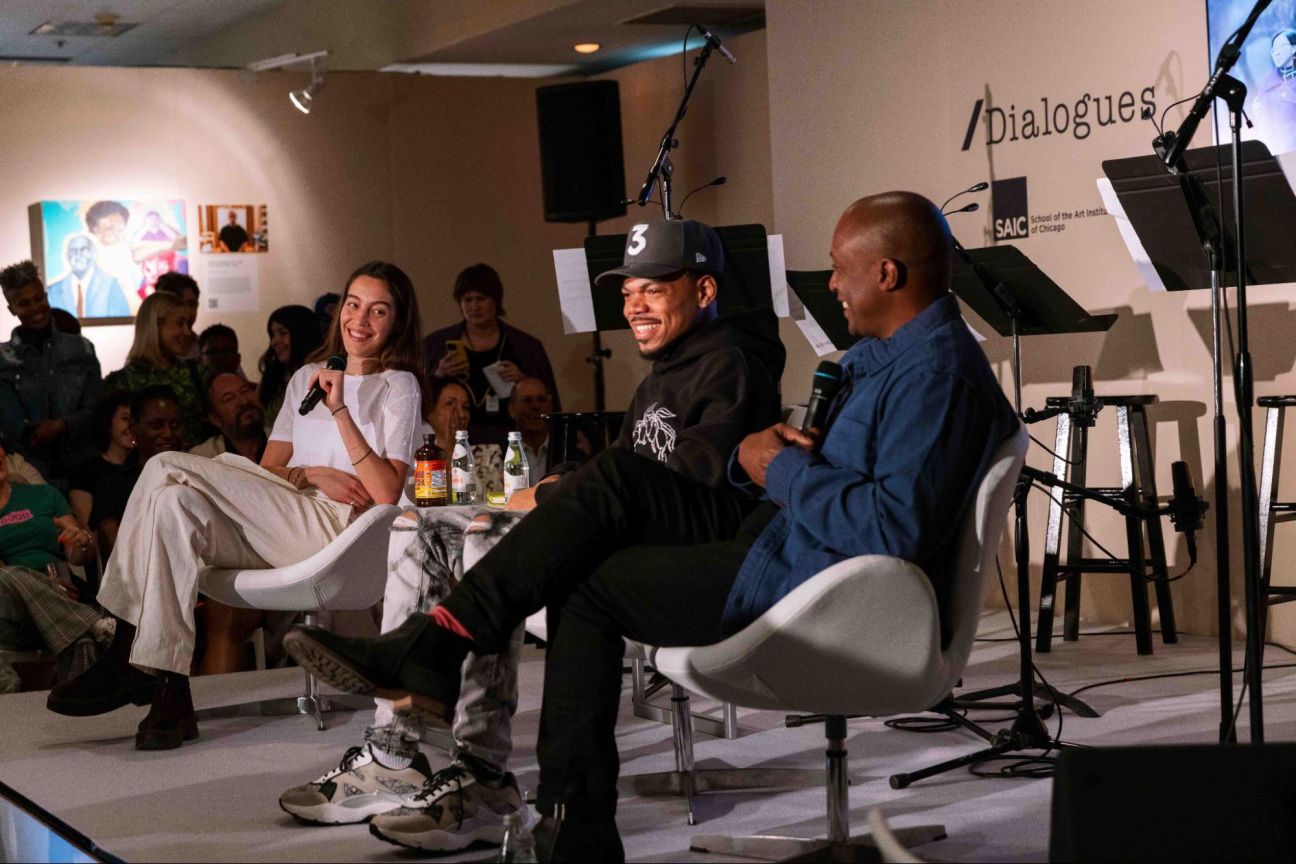
Last weekend, Chicago welcomed the global art community to the Navy Pier exhibition hall for EXPO CHICAGO. After picking up where Art Chicago (which ran from 1980 to 2011) left off, the fair is now in its 10th year and features 170 exhibitors representing 36 countries and 90 cities. As a Midwestern hub with a legacy for championing public art, the city is uniquely positioned to embrace dialogues around access and equity while hosting an array of esteemed galleries from across Latin America, Africa, Asia, and Europe.

Access was the subject of the fair’s opening night /DIALOGUES panel featuring Chicago native Chance the Rapper and artist Hank Willis Thomas. Presented by EXPO CHICAGO in partnership with CULTURED and moderated by the magazine’s senior editor Mara Veitch, the musician and sculptor discussed their media-spanning practices, community building, and their shared commitment to public art. Chance has staged the work of Black artists in some of the country’s most hallowed institutions through his “Star Line Gallery” project, while Thomas has brought sculpture outside the museum and into public spaces with monumental works like The Embrace in Boston Common and Reach, 2023, at Chicago’s O’Hare Airport. Both Chance and Thomas made clear that the aim of their work is to bring more people—and a wider array of artistic philosophies—into the fold.
The ethos of the panel proved an apt introduction to the fair. Among the sea of booths presenting everything from emoji-esque tile installations (ceramicist Jackie Head presented by The Hole) to now-standard figurative fare, a throughline emerged: tactile assemblage and materials that reflect an array of diasporic narratives. If the works on view are any indication, the dominance of painting is waning and the age of assemblage is upon us.
At the group showing of diasporic artists at Miami-based Mindy Solomon Gallery’s booth, a constellation of Moises Salazar Tlatenchi’s brightly colored tufted-rug cherubs traipsed across a wall flanked by fiber works from Malaika Temba, Basil Kincaid, and Anya Paintsil, and felted portraits from Melissa Joseph.
New York-based Eric Firestone presented lively life-sized collages by Detroit-born assemblage artist Judy Bowman that exalt Black life through scenes comprised of textured and metallic paper shards. At Los Angeles gallery Luis De Jesus’s group presentation, captivating and textural collages by Evita Tezeno demand a pause to appreciate a quiet moment of intimacy.
Meanwhile, an installation by 6018|North, a Chicago-based experimental arts space, was built from water bricks (a durable container system for storing water in harsh environments). It featured streetwear garments hewn from trash—a boxy, technicolor puffer made from coffee sacks by the artist Alex McDermott and an array of purses and accessories salvaged, designed, and assembled by Lilith Parker and KHÔI—bringing survival into conversation with high fashion and calling on visitors to interrogate their conceptions of sustainability. New York’s Malin Gallery booth was dedicated to Jesse Krimes’s embroidery works and assemblage sculptures, which pose questions about beauty, tradition, labor, and decay.
The strong showing of craft and collage signals renewed attention to assemblage practices and the enduring appeal of the handmade. According to EXPO CHICAGO President and Director Tony Karman, this aesthetic is also reflected in the city itself. “Chicago has always been known for being the place that gets its hands dirty,” he says. “This is a city that collaborates, that pulls things together. We’re not always heralded like other cities, and we don’t have hundreds of galleries, but there’s an amazing amount of talent here.”




